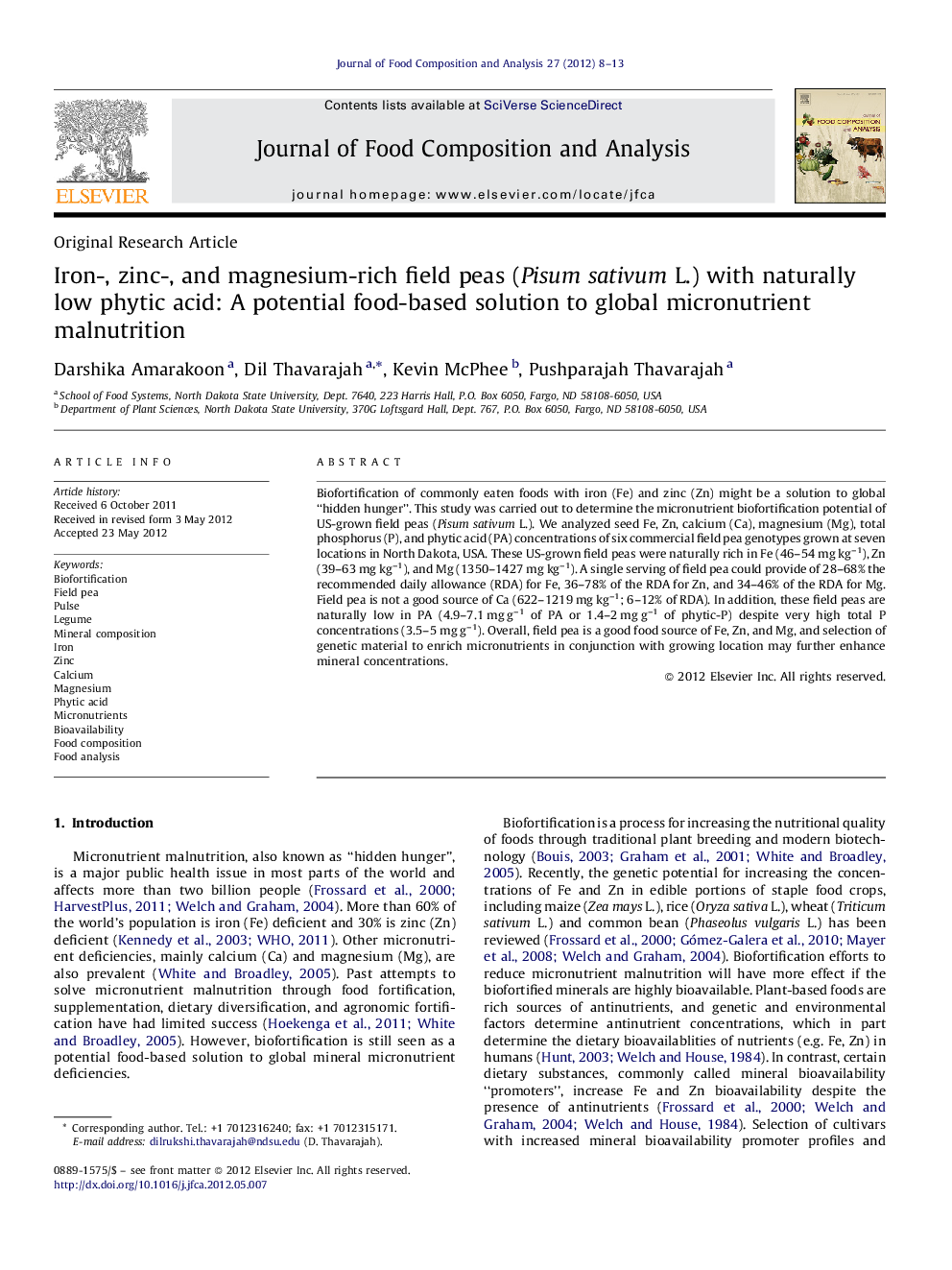| کد مقاله | کد نشریه | سال انتشار | مقاله انگلیسی | نسخه تمام متن |
|---|---|---|---|---|
| 10552772 | 967605 | 2012 | 6 صفحه PDF | دانلود رایگان |
عنوان انگلیسی مقاله ISI
Iron-, zinc-, and magnesium-rich field peas (Pisum sativum L.) with naturally low phytic acid: A potential food-based solution to global micronutrient malnutrition
دانلود مقاله + سفارش ترجمه
دانلود مقاله ISI انگلیسی
رایگان برای ایرانیان
کلمات کلیدی
Iron - آهنField pea - احتمالا احتمال داردBiofortification - بیفایتفتیFood analysis - تجزیه و تحلیل مواد غذاییMineral composition - ترکیب معدنیFood composition - ترکیب مواد غذاییBioavailability - فراهم زیستیZinc - فلز رویPhytic acid - فیتیک اسید، هگزوفسفات اینوزیتولLegume - لوبیاMagnesium - منیزیمMicronutrients - میکرونوترینت هاPulse - نبضCalcium - کلسیم
موضوعات مرتبط
مهندسی و علوم پایه
شیمی
شیمی آنالیزی یا شیمی تجزیه
پیش نمایش صفحه اول مقاله

چکیده انگلیسی
Biofortification of commonly eaten foods with iron (Fe) and zinc (Zn) might be a solution to global “hidden hunger”. This study was carried out to determine the micronutrient biofortification potential of US-grown field peas (Pisum sativum L.). We analyzed seed Fe, Zn, calcium (Ca), magnesium (Mg), total phosphorus (P), and phytic acid (PA) concentrations of six commercial field pea genotypes grown at seven locations in North Dakota, USA. These US-grown field peas were naturally rich in Fe (46-54 mg kg-1), Zn (39-63 mg kg-1), and Mg (1350-1427 mg kg-1). A single serving of field pea could provide of 28-68% the recommended daily allowance (RDA) for Fe, 36-78% of the RDA for Zn, and 34-46% of the RDA for Mg. Field pea is not a good source of Ca (622-1219 mg kg-1; 6-12% of RDA). In addition, these field peas are naturally low in PA (4.9-7.1 mg g-1 of PA or 1.4-2 mg g-1 of phytic-P) despite very high total P concentrations (3.5-5 mg g-1). Overall, field pea is a good food source of Fe, Zn, and Mg, and selection of genetic material to enrich micronutrients in conjunction with growing location may further enhance mineral concentrations.
ناشر
Database: Elsevier - ScienceDirect (ساینس دایرکت)
Journal: Journal of Food Composition and Analysis - Volume 27, Issue 1, August 2012, Pages 8-13
Journal: Journal of Food Composition and Analysis - Volume 27, Issue 1, August 2012, Pages 8-13
نویسندگان
Darshika Amarakoon, Dil Thavarajah, Kevin McPhee, Pushparajah Thavarajah,